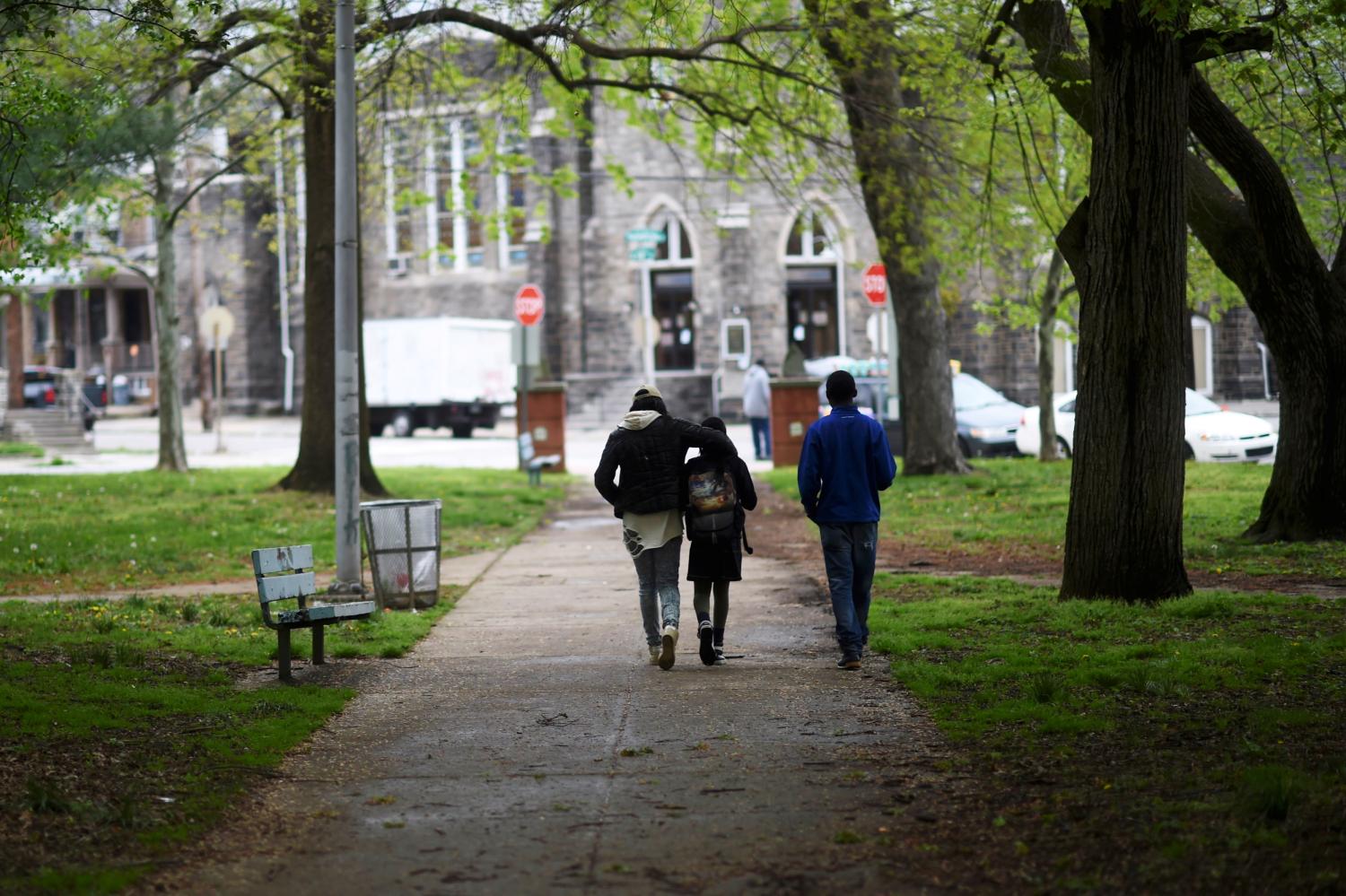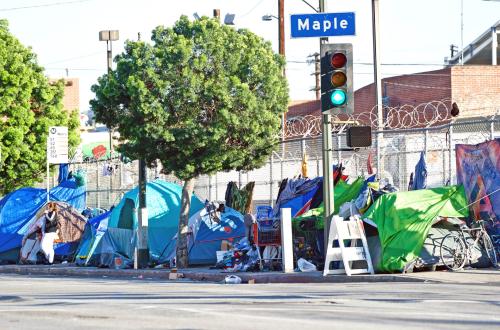The American Rescue Plan Act set aside $800 million to support the identification, enrollment, and participation in schools of students experiencing homelessness. This influx of funding has created a historic opportunity to strengthen services for one of the most underserved groups of students in U.S. schools.
We draw on several recently published studies to, first, describe why it is important to focus on students experiencing homelessness, and second, to share ways that state and local education agencies might improve the identification and support they provide to this vulnerable group.
Homelessness is detrimental for educational outcomes
More than a decade of research has shown that students experiencing homelessness lag behind their peers in key educational outcomes, including academic achievement in math and reading, attendance, and high school graduation. A recently published study adds to the preponderance of evidence that homelessness is detrimental, and it provides new evidence on how the duration and timing of homelessness matter for outcomes. In that study, the two of us—along with our co-authors Ann Owens and Gary Painter—focus on students in the Los Angeles Unified School district (LAUSD). We find that experiencing homelessness is associated with lower achievement and attendance. These negative relationships persist even in years after students become housed, with students who were previously homeless scoring lower on state tests and missing more days of school than students who never experienced homelessness.
Interestingly, we see that students’ academic performance and attendance stabilize after they are identified as homeless and eligible for services for multiple years. This suggests to us that being identified as homeless is itself helpful for students. That is, while homelessness harms children’s educational outcomes, those harms are mitigated by the resources and supports that schools and districts provide the homeless students they identify.
These results highlight both why we should be concerned with students experiencing housing loss and why it’s important to identify these students and provide support.
Using mobility to proactively identify students
If identifying homeless students is important for mitigating the negative impacts of homelessness, then it stands to reason that early identification would be especially valuable.
In another recent study focused on students in LAUSD, our research team finds that students who eventually become homeless change schools and addresses frequently in the years before being identified. This suggests a window of opportunity to proactively identify students who are experiencing homelessness. Asking families to update their housing status each time they change addresses or schools—while informing them of the rights and resources associated with homeless identification—could help to find homeless families who qualify for services but have not yet been identified.
Additionally, federal law allows students experiencing homelessness to remain in the same school even if they move outside the attendance boundary, and it mandates that schools provide transportation. Still, our study finds that school changes increase sharply after students are identified as homeless. To reduce student mobility, which is associated with worse educational outcomes, schools should consider information campaigns to ensure that families are aware of their rights. Some families might opt to stay in the same school if made aware of the option.
Improving identification with email “nudges” for homeless liaisons
District and school homeless liaisons are responsible for coordinating homeless student identification and support efforts. Often, homeless liaisons have other responsibilities, including being administrators, counselors, or clerical staff. This means they must balance liaison duties—including the identification of homeless students, connecting students with services and providing referrals to other programs, educating students and families of the rights of homeless children and youth, and training school personnel that provide services to homeless students—with other competing job responsibilities.
A recently published study by Daniel Shephard and co-authors, covered by Schoolhouse Connection, offers a low-cost strategy to improve homeless student identification by sending email reminders to liaisons. Drawing on insights from the behavioral sciences, the research team sent emails to district homeless liaisons that were designed to motivate action and share helpful information to improve identification. For example, these emails strategically used goals (e.g., “The year we resolved to reach out to every student experiencing homelessness”), collective language (e.g., “We are all in this together and every student identified stands to benefit”), and loss aversion (e.g., “Make sure students in your district don’t miss out on their rights”) to nudge liaisons to prioritize identification. A series of simple emails had a meaningful impact on identification: Districts that received emails identified 12% more homeless students. The authors have made their email templates available here so that states and districts can run similar email campaigns.
Scaling email nudges like these could help boost identification and ensure more supports for kids who need them. More broadly, the study shows that paying greater attention to the process of identification results in more homeless students being identified and supported. Other strategies might also help districts and schools prioritize identification, like more emphasis from district leaders, more time/people allocated to working on student homelessness, or more training in identification.
Taking advantage of best practices
The COVID-19 pandemic created unique challenges that were often met with swift and creative responses from schools. Innovative practices that were implemented during the pandemic should continue to be scaled moving forward. For example, Alexandra Pavlakis and co-authors suggest incorporating multiple modalities (e.g., phone calls and virtual communication) and more proactive communication efforts even as the pandemic ends.
Other strategies proposed by SchoolHouse Connection include: following up with students identified as experiencing homelessness in prior years; having non-threatening conversations about identification of homelessness and the rights of students and families; translating materials and having bilingual staff available; engaging with community partners and posting information at highly visited sites, such as laundromats, libraries, motels, grocery stores, and campgrounds; and connecting with local eviction courts and sheriff’s offices so they can provide information to evicted families.
What lies ahead
Now that the national eviction moratorium has expired and state and local rental-assistance programs have starting closing or being put on hold, homelessness among families and school-aged children may rise. Evictions and homeless experiences have cascading negative effects that can become long term, including more frequent moves, school changes, and a sense of general instability and stress. This can result in negative effects on mental health, academic outcomes, and social development.
It is imperative that we improve the identification of students experiencing homelessness and housing instability to support them more swiftly as the COVID-19 pandemic evolves. This is especially the case if, as our data from Los Angeles suggest, homeless identification is associated with stabilization in student outcomes. The research-informed strategies described above should be added to homeless liaisons’ and local education agencies’ toolkits.
The Brookings Institution is committed to quality, independence, and impact.
We are supported by a diverse array of funders. In line with our values and policies, each Brookings publication represents the sole views of its author(s).







